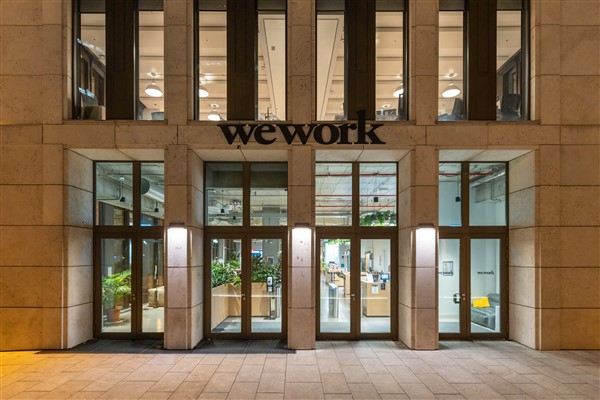WeWork’s Uncertain Future and Its Impact on Commercial Real Estate
The future of co-working giant WeWork is shrouded in uncertainty, raising significant concerns in the commercial real estate sector. WeWork recently issued a “going-concern” warning, signaling doubts about its ability to remain operational. This warning stems from multiple factors, including increased competition, a surplus of commercial real estate supply, and economic uncertainty, which have led to losses and dwindling cash reserves for the company.
WeWork, once valued at $47 billion, has faced a decline in demand for its co-working spaces and a higher-than-anticipated churn rate in memberships. As employees remain reluctant to return to traditional office spaces due to ongoing pandemic concerns, WeWork’s business model has encountered major challenges.
The co-working behemoth has gone through a tumultuous journey since its inception. Its charismatic co-founder, Adam Neumann, and his unconventional management style raised investor concerns, leading to his ousting in 2019. WeWork then went public in 2021 through a merger with a special-purpose acquisition company (SPAC). However, its stock price has plummeted by over 95% since its public listing.
WeWork’s financial struggles have prompted attempts to restructure its debt and improve its financial position. The company entered into a debt restructuring deal with its largest investor, SoftBank, along with other major creditors earlier this year. This deal aimed to reduce the company’s debt and improve its liquidity.
Despite these efforts, WeWork’s “going-concern” warning has reignited concerns about its survival. This uncertainty has sent shockwaves through the commercial real estate sector, especially for landlords and tenants who are connected to WeWork’s extensive global portfolio.
Potential scenarios arising from WeWork’s challenges include bankruptcy, liquidation, or potential takeovers. Some landlords may be prepared to take back spaces currently leased to WeWork, while others may consider continuing to operate these spaces on a serviced office basis. Management agreements, which give landlords more control over operations but come with higher risk, are also being explored.
The impact of WeWork’s predicament on its tenants and customers, particularly small businesses, could mean potential loss of deposits and the need to find alternative workspace solutions. However, the broader flexible office market remains strong, with the ability for tenants to quickly transition to other flexible office providers.
Ultimately, the uncertainty surrounding WeWork emphasizes the need for landlords, tenants, and the commercial real estate industry as a whole to adapt to the changing landscape of work. Flexible office arrangements, management agreements, and enhanced cost control measures are among the strategies being explored to mitigate potential fallout from WeWork’s challenges.
While WeWork’s struggles serve as a cautionary tale, they also highlight the resiliency of the flexible office market and the adaptability of both landlords and tenants in the face of evolving work trends. As the industry navigates these uncertainties, its ability to pivot and innovate will be crucial in shaping the future of workspace solutions.

